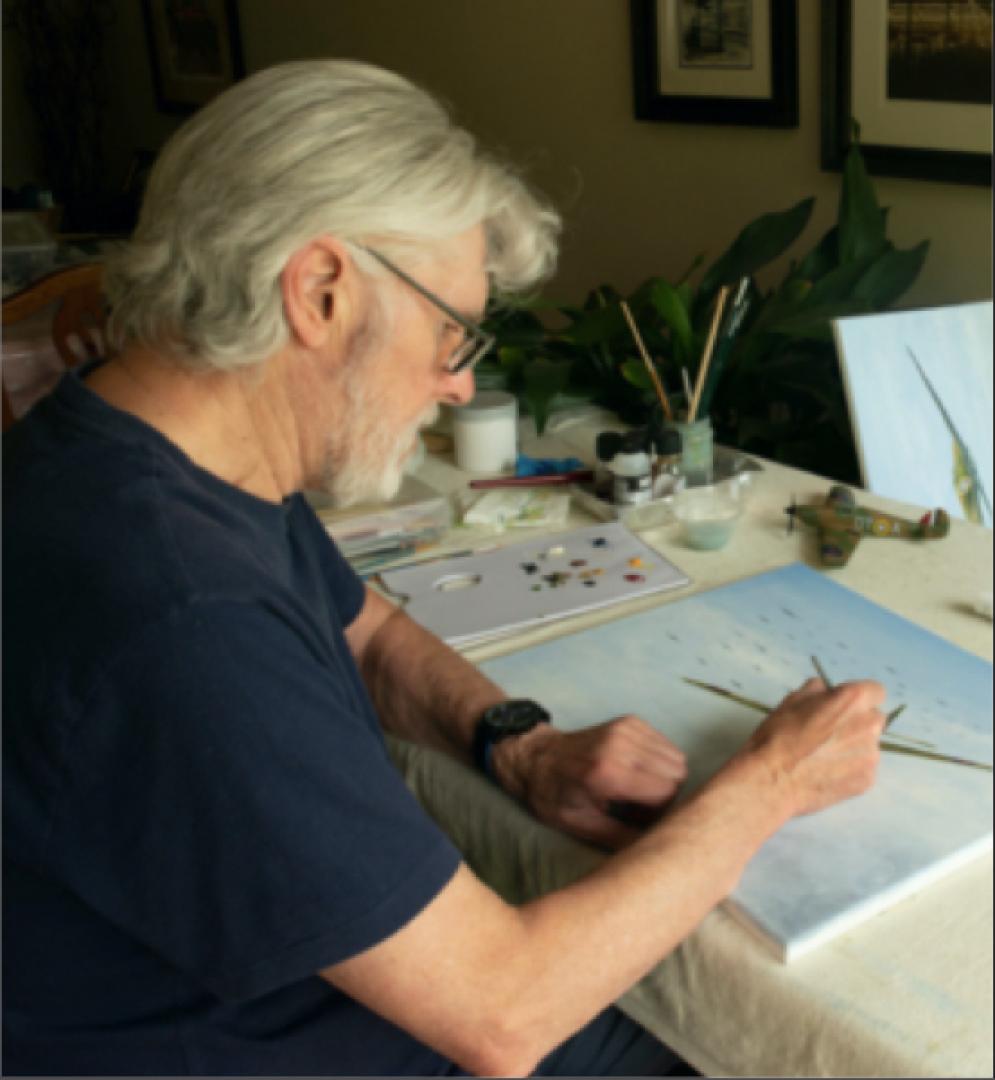AN artist has created a series of paintings to mark the anniversary of a dramatic Second World War dogfight over Teesdale during the Battle of Britain.
On August 15, 1940, the Luftwaffe launched a huge attack in the North East.
Bombers pounded the countryside as the planes came inland.
One Messerschmitt Bf 110 bomber got as far as Barnard Castle, but Spitfire pilot Sqn Ldr George “Ben” Bennions shot it down in a dog fight.
The Nazi warplane was forced to crash land near Broomielaw, close to the military camp at Streatlam.
Denis Harry Fox, an artist from Durham City, has created 12 paintings over the last three years connected with the dramatic events of that day in the North East.
He said: “The story behind each of my paintings has been thoroughly researched as I have had the opportunity of not only reading through newspaper archives and autobiographies but also reading logbooks belonging to the pilots who risked their lives defending the nation.
“I have also gained valuable information from eye witness accounts and the stories told to me from my grandfather when I was a young child.
“My grandfather who fought for the DLI in the First World War and who was injured on the Somme, joined the Home Guard in 1939 and was part of the anti-aircraft gun crew at Seaham Harbour.
“He was involved in the action on that memorable day when the Luftwaffe were defeated by the RAF.”
According to the records from No 41 Squadron based at Catterick, Pilot officer TE Shipman, leading B Flight’s Green Section, was ordered to attack a formation of Me 110 fighter-bombers near Seaham Harbour.
Shipman gave a short burst of fire from his Spitfire into one of the enemy fighter-bombers, which was seeking cover in a formation of cloud.
“He assumed that the enemy aircraft was put out of action and broke off the attack,” said Mr Fox.
However pilot officer Bennions sighted the enemy aircraft emerging from cloud cover and opened up on it with his eight machine guns at 250 yards which caused the port engine to smoke.
“The Me 110 glided down towards Barnard Castle with petrol and glycol freely flowing behind it.
“Seeing the enemy aircraft continue towards the ground and make no effort to recover, Bennions left it at 2,000 feet and returned to RAF Catterick. He had expended 1,000 rounds of .303 inch ammunition.”
According to reports the following week in the Teesdale Mercury the plane had two crewmen. Both were unhurt, but were “conveyed to Barnard Castle police station” .
When the plane crashed there was an explosion and one workman suffered slight injuries, the Mercury reported. The two German airmen who survived the crash landing were taken prisoners of war – Oblt Hans-Ulrich Kettling, the pilot, and Obgfr Fritz Volk, the wireless operator.
An exhibition of Mr Fox’s paintings will be held in Durham City Town Hall from Friday, September 10, until Sunday, September 19.
ADVERTISEMENT
Artist’s tribute to dogfight in the skies above Teesdale
ADVERTISEMENT
ADVERTISEMENT
ADVERTISEMENT






